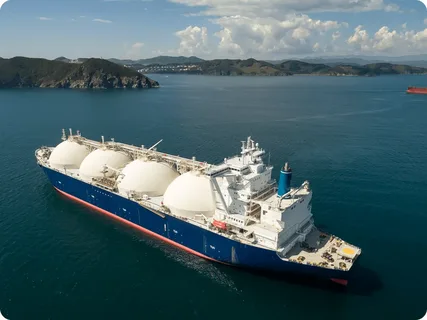Floating LNG Power: Revolutionizing Offshore Energy Supply

Introduction
The global Floating LNG (FLNG) Power Vessel Market is witnessing substantial momentum as nations seek flexible, efficient, and environmentally friendly energy solutions. Floating LNG vessels serve dual purposes—storing, regasifying, and generating power directly from liquefied natural gas at sea or near coastal areas. These vessels eliminate the need for onshore terminals and infrastructure, offering a faster and more economical alternative for energy generation in remote or energy-deficient regions. With increasing global energy demand, stricter emission regulations, and the transition toward cleaner fuels, FLNG power vessels are gaining prominence as a sustainable bridge between fossil fuels and renewables.
Market Drivers
The key driver for the FLNG power vessel market is the global rise in natural gas consumption, driven by its relatively low emissions compared to coal and oil. Emerging economies in Asia, Africa, and Latin America are facing surging electricity demands but often lack sufficient infrastructure for LNG imports. FLNG vessels address this gap by providing a ready-to-deploy power generation solution that requires minimal onshore development.
Additionally, the shift toward decentralized and mobile energy systems supports market growth. Governments and private energy companies are investing in FLNG technologies to achieve energy security and reduce dependency on traditional power grids. The lower construction time, scalability, and reduced land use further enhance the appeal of FLNG vessels. Advancements in floating storage and regasification technology (FSRU) have made LNG-based floating power plants more efficient and safer, promoting their adoption worldwide.
Market Challenges
Despite promising growth, the FLNG power vessel market faces several operational and financial challenges. The initial investment required to build and deploy these vessels is significantly high, often exceeding several hundred million dollars per unit. Moreover, maintenance and safety protocols for offshore LNG storage and regasification require advanced engineering and trained personnel.
Weather-related risks, such as storms and rough sea conditions, can disrupt operations and damage critical components. Regulatory hurdles also pose barriers, as each region has distinct maritime and environmental compliance requirements. The volatility of LNG prices and fluctuations in global gas supply due to geopolitical tensions can further impact project feasibility and profitability.
Market Opportunities
The market offers strong opportunities in regions that lack robust power infrastructure but have growing energy demand, such as Southeast Asia, Sub-Saharan Africa, and island nations in the Pacific. As governments push for cleaner fuels, FLNG power vessels are positioned as an attractive mid-term energy solution bridging renewables and traditional hydrocarbons.
Integration of hybrid energy systems—combining LNG power generation with solar or wind energy—presents new growth avenues for operators. Furthermore, advancements in vessel design, modular construction, and automation can significantly reduce costs and improve operational safety. The rise of small-scale LNG projects and the growing preference for mobile, rapidly deployable energy units make FLNG an ideal solution for remote mining operations, disaster recovery sites, and temporary power needs.
Regional Insights
Asia-Pacific currently dominates the FLNG power vessel market, with key activity in Indonesia, Malaysia, and the Philippines, where island-based energy supply remains fragmented. Japan and South Korea are also investing in FLNG technology to diversify their energy imports and reduce carbon emissions. Africa, particularly Mozambique and Nigeria, is emerging as a potential hotspot for FLNG developments, driven by abundant natural gas reserves and demand for off-grid electricity.
In Europe, countries around the Mediterranean are exploring floating LNG power projects to replace coal-fired plants and strengthen grid stability. The Middle East is seeing strategic investments in LNG infrastructure, and North America’s LNG exporters are targeting new markets for vessel-based power delivery systems.
Future Outlook
The FLNG power vessel market is expected to grow significantly over the next decade as global LNG trade expands and nations prioritize flexible, lower-carbon power solutions. Technological advancements in modular LNG power units, AI-based operation systems, and autonomous maintenance will enhance vessel reliability and efficiency.
Furthermore, hybridization—where LNG vessels integrate renewable energy support systems—will make them even more sustainable and cost-effective. As carbon capture and storage (CCS) technologies mature, FLNG power generation could become a viable option in the global net-zero transition. The combination of mobility, adaptability, and environmental benefits will likely establish FLNG vessels as a mainstream solution for energy security and decarbonization in developing regions.
Conclusion
The Floating LNG Power Vessel Market represents a critical innovation in global energy infrastructure, merging mobility, sustainability, and efficiency. By offering quick deployment, reduced onshore dependency, and cleaner power generation, FLNG vessels are poised to reshape the global energy landscape. As technological advancements continue to improve efficiency and reduce costs, FLNG will serve as a key transitional technology enabling nations to achieve both energy access and climate goals.



